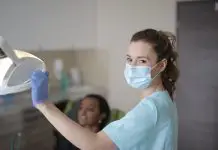Hair loss is a common issue that lots of people face, and it can be hard to overcome. Some people may try natural remedies like soaking their scalp in onion juice or spritzing rosemary oil onto their roots every night.

However, there are other more permanent procedures that you can try that do have a higher success rate. Hair transplants are becoming increasingly popular, with many celebrities turning to them to try and restore their lost locks. You don’t have to get the procedure in your own town either.
You can actually get a hair transplant in Turkey and get the same, if not better results. One of the most important parts of the success of your transplant is your recovery. Aftercare is crucial and if it’s not done correctly, it can hinder your results. So, to help, we’ve put together a guide explaining what you can expect from your hair transplant recovery. Keep reading to find out more…
Pain
After your procedure, you’ll most likely experience some tenderness in the area as although the surgery isn’t extremely invasive, it’s still going to be sore. You’ll also start to develop scabs and some bruising as well. It’s crucial that you don’t pick the scabs no matter how tight or itchy they feel. Picking them off can hinder the regrowth that you’ve just sat through a procedure for.
You may be advised to take some pain medication for the first few days as you might experience headaches and tightness in the area. You may also be prescribed antibiotics or anti-inflammatory pills to try and help the healing process. Although there will be some pain, it won’t be unbearable or cause you too much discomfort. It should ease off with the use of pain killers, allowing you to easily recover.
Aftercare
Following your aftercare steps to the letter is extremely important if you want to see the best results possible. You’ll be advised now to touch or disturb the area as you don’t want to inhibit any of the newly transplanted follicles. It’s vital that you don’t wash your hair or scalp for at least 48 hours after the procedure. When you can finally wash your hair, you need to do so with extreme caution as rubbing too vigorously can damage the new follicles. You also don’t want to use water that’s too hot as it will dry your scalp out and make it feel even tighter. It’s also a good idea to sleep flat on your back as sleeping on your front or side can cause friction in the area.
You should try to avoid too much sun exposure for the first two weeks as sunburn can be detrimental to your success. You should forgo hats too, as like sleeping on your front, it can rub too much on your new hairline and undo the procedure. Essentially, you want to keep your scalp protected and try not to fuss over it too much to try and ensure your transplant is a success.
Risks
Hair transplants are pretty expensive, so you want to be 100% certain of the risks before going into it. Just like any surgery, there is a chance of infection at the site of the transplant. There’s also a risk of scarring, which may or may not fade over time. The risk can come from the procedure itself or it can come with improper aftercare. If you don’t keep the area clean or allow it to be covered in hair products before it’s healed, you can easily cause infection which can then lead to the follicles falling straight back out. When your new hair begins to grow, you can also develop a condition called folliculitis. This can cause the newly grown hair to fall out and leave the transplant area patchy. You may also suddenly lose parts of your new hair for no reason at all, but this isn’t common. Knowing all the risks will allow you to make the best choice for your procedure and help you decide if you want to go through with it.
Recovery Time
After your procedure, you should be able to return to work within 2 – 5 days. This doesn’t mean you’re fully recovered, but you should be starting to feel back to normal and the tenderness should have subsided. After 2 or 3 weeks, you’ll start to notice that your transplanted hair falls out and the new hairs will begin to grow. Typically, you’ll see substantial hair growth within 9 months, but it could be longer depending on how fast your hair grows. Once your hair has grown back, it should look thicker than before and keep growing for the foreseeable future.
Hair transplants are an innovative procedure that can work wonders for those suffering from hair loss. Although the recovery can seem like a lot, it’s a worthwhile procedure as the results can be totally life-changing. So, if you’re thinking of getting a hair transplant, make sure you discuss your aftercare and recovery with your chosen surgeon so you can be track to restoring your hair.








































